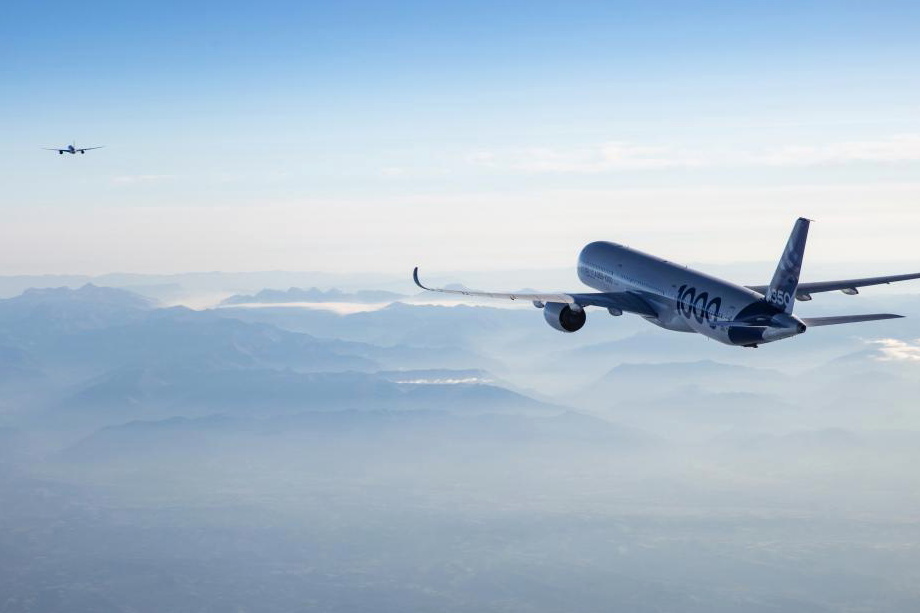|
(11 Nov 2021)
Airbus has performed the first long-haul
demonstration of formation flight in general air traffic (GAT)
regulated transatlantic airspace with two A350 aircraft flying at
three kilometers apart from Toulouse, France to Montreal, Canada.
Over 6 tons of CO2 emissions were saved on the trip,
confirming the potential for more than a 5% fuel saving on
long-haul flights.
The test flight took place
on 9 November 2021 involving two A350 test aircraft, MSN1 and
MSN59, the former as the leader aircraft and the latter as the
follower.

Two Airbus A350 test aircraft, MSN1 and MSN59, on a transatlantic test flight to save fuel.
Control systems
developed by Airbus positioned the follower aircraft safely in
the wake updraft of the leader aircraft allowing it to reduce
engine thrust and reduce fuel consumption.
A similar principle can
be observed with large migrating birds such as geese, which fly
together in a distinct V-shaped formation.
Sabine Klauke, Chief Technical Officer at Airbus,
said, �This demonstration flight is a concrete example of our
commitment to making our decarbonisation roadmap a reality. It
also speaks to how collaboration across the industry will be key
to making this happen. We have received a strong level of support
for this project from our airline and air traffic partners, plus
regulators. The opportunity to get this deployed for passenger
aircraft around the middle of this decade is very promising.
Imagine the potential if fello�fly was deployed across the
industry!�
Pilots from Airbus partner airlines SAS
Scandinavian Airlines and Frenchbee witnessed the transatlantic
flight onboard as observers.
The flight was made possible by
Airbus and its air traffic management partners and navigation
service providers (DSNA, NATS, NAV CANADA, Eurocontrol and IAA),
with the support of the DGAC, who together proved that wake energy
retrieval flight technology leveraged in a fello�fly flight can be
achieved without compromising safety.
The demonstration also shows
how fello�fly operations could significantly boost environmental
performance of commercial aircraft and contribute to the aviation
industry�s decarbonisation targets in the immediate term.
The next step is to get the support of the
authorities so that this new operational concept can be certified,
and ultimately enable airlines to reduce their fuel burn and CO2
emissions.
|
Headlines: |
|
|

